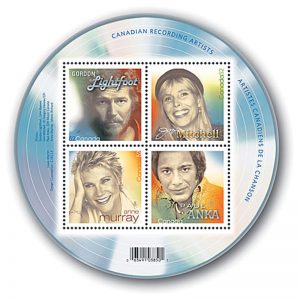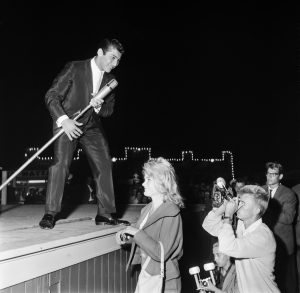On today’s date in 1959, Canadian pop star Paul Anka sang two of his chart-topping singles, Put Your Head on My Shoulder and It’s Time to Cry, during his second appearance on the Ed Sullivan Show.
Two years after his Sullivan Show debut, Anka returned to the stage on the heels of his single Diana, which spent 18 weeks at the top of the Billboard charts and has since sold about 10 million copies.
“Paul Anka from Ottawa is another incredibly talented performer,” Sullivan wrote for an Oct. 9, 1971, issue of the Canadian Magazine, which was distributed with the Calgary Herald and other newspapers. “When he was 15, he wrote Diana, which he introduced on our show and since then has sold more than eight million copies. The other day, I caught his act in Las Vegas, and I don’t think anyone in the entertainment world today puts on a better, more professional show. You should see what he does in person with his song My Way. Frank Sinatra made the song a hit, but Anka does it just about as well.”
125-ALBUM CAREER
Throughout his career, Anka has recorded 125 albums, selling about 15 million copies worldwide.
He’s also the lyricist behind other musicians’ hits, including Tom Jones’ She’s a Lady; Buddy Holly’s It Doesn’t Matter Anymore; and Frank Sinatra’s My Way.
For his work, Anka has earned a star on the Hollywood Walk of Fame; an induction into the Songwriters Hall of Fame plus Canada’s Walk of Fame; and the Order of Arts and Letters from the French government.
Upon being inducted into Canada’s Walk of Fame, Anka said: “My family came here to Canada … they were allowed to pursue their dreams and soon felt that this was their home. It’s true, I left as a teenager, pursued those dreams. A man once said you can’t go back, you can’t go home again—well, that guy was not a Canadian.”

The 2007 Canadian Recording Artists set features (clockwise from top left) Gordon Lightfoot (Scott #2221a), Joni Mitchell (SC #2221b), Anne Murray (SC #2221c) and Paul Anka (SC #2221d).
CANADIAN RECORDING ARTISTS
In 2007, Canada Post issued a set of four domestic-rate stamps (then 52 cents) to celebrate Anka alongside fellow Canadian music icons Joni Mitchell, Anne Murray and Gordon Lightfoot.
Four eight-stamp CD-shaped “Canadian Recording Artists” booklets, each with a cover featuring an image of one of the artists, were issued. Inside the booklets, the stamps are arranged in one of four different orders, with the artist on the cover appearing in the top-left position. Inspired by album covers, each stamp is square shaped and features a photo of the artist along with distinctively styled fonts appropriate to the era.


